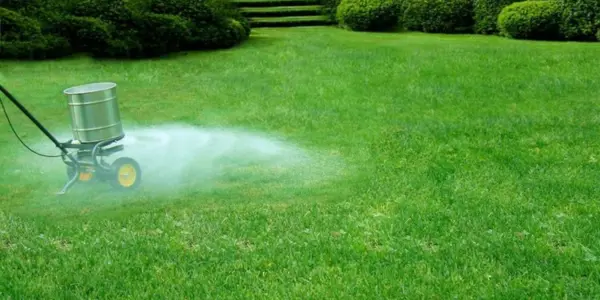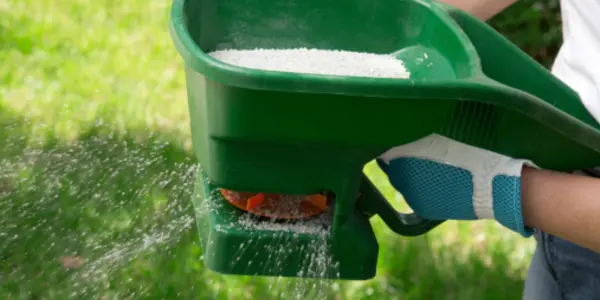With the arrival of summer and temperatures heating up across the country, many homeowners are left wondering: Can you fertilize lawn in summer without risking burning it? This common concern is understandable, especially given the importance of keeping a healthy and lush lawn throughout the hottest months of the year.
In this article, we will discuss the feasibility of fertilizing your lawn in summer, share practical tips, and outline best practices to ensure your lawn remains vibrant and green. By the end of this article, you’ll have a clear understanding of how to approach summer lawn fertilization effectively and safely.
What is Lawn Fertilization?

Lawn fertilization is a critical aspect of lawn care that involves applying nutrients to the soil to promote healthy grass growth. These nutrients typically include nitrogen (N), phosphorus (P), and potassium (K), which are essential for the overall health of your lawn. Fertilization helps to:
Enhance the color and thickness of the grass.
Strengthen the root system.
Improve resistance to weeds, pests, and diseases.
Aid in recovery from foot traffic and environmental stress.
Can You Fertilize Lawn in Summer?

Summer can be a challenging time for lawn care due to high temperatures, increased foot traffic, and potential drought conditions.
However, it is entirely possible to fertilize your lawn during this season if done correctly. The key is to understand your lawn’s specific needs and adjust your fertilization strategy accordingly.
Will Fertilizing in Summer Burn the Lawn?
One of the most common concerns is whether fertilizing in the summer will burn the lawn. It is largely a myth when proper practices are followed. Fertilizers, particularly granular ones, are not “magic hot bullets” that will scorch your lawn upon contact.
Instead, the risk of burning typically arises from improper application, such as over-fertilizing or applying to wet grass.
Tips for Summer Fertilization
Read the Label
Always read the label on your fertilizer product. Manufacturers provide specific instructions and precautions, ensuring safe and effective application.
Example: “Freedom” summer fertilizer, which is designed specifically for hot weather, includes detailed guidelines on application rates and timing.
Choose the Right Fertilizer
Opt for slow-release granular fertilizers to provide a steady supply of nutrients without overwhelming the grass.
Comparing Fertilizer Types
| Fertilizer Type | Release Rate | Application Frequency | Ideal Use |
|---|---|---|---|
| Slow-Release Granular | Gradual | Every 6-8 weeks | Long-term feeding, minimal runoff |
| Quick-Release Granular | Immediate | Every 4-6 weeks | Rapid greening, short-term boost |
| Liquid | Immediate | Every 2-4 weeks | Quick nutrient uptake, frequent application needed |
Timing and Application
Apply fertilizer in the early morning or late evening when temperatures are cooler to reduce stress on the grass.
Avoid fertilizing during peak heat hours (midday).
Ensure the grass is dry at the time of application to prevent fertilizer granules from sticking to the blades.
Watering

Water your lawn thoroughly after fertilization to help dissolve the granules and promote nutrient absorption.
Avoid watering before application to prevent granules from sticking to wet grass blades, which can lead to localized burning.
Adjusting Fertilizer Use Based on Grass Type
Different types of grass have varying needs and growth patterns, especially during the summer. Understanding these differences will help you tailor your fertilization strategy effectively.
Cool-Season Grasses

Cool-season grasses (e.g., Kentucky bluegrass, fescue, ryegrass) thrive in cooler temperatures and tend to slow down growth during the heat of summer. These grasses benefit from a different fertilization approach:
Reduce Nitrogen: Lower the amount of nitrogen applied during summer to avoid stressing the grass.
Focus on Potassium: Increase potassium to help the grass cope with heat stress.
Slow-Release Fertilizers: Use fertilizers with a higher proportion of slow-release nitrogen.
Warm-Season Grasses

Warm-season grasses (e.g., Bermuda, zoysia, St. Augustine) are more active during the summer and can handle higher temperatures:
Regular Nitrogen Applications: These grasses can benefit from regular nitrogen applications to support vigorous growth.
Balance Nutrients: Ensure a balanced nutrient supply, including nitrogen, phosphorus, and potassium.
Consistent Watering: Maintain consistent watering schedules to support nutrient uptake and growth.
Conclusion
Fertilizing your lawn in summer is not only possible but also beneficial when done correctly. By understanding the needs of your grass type, choosing the right fertilizer, and following best practices, you can maintain a lush and healthy lawn throughout the hottest months of the year.
Remember to always read the product labels, adjust your fertilization schedule based on weather conditions, and prioritize consistent watering to support your lawn’s growth and resilience.
FAQs
Can you fertilize a lawn in extreme heat?
It’s best to avoid fertilizing during extreme heat waves. Opt for early morning or late evening applications when temperatures are cooler.
What type of fertilizer is best for summer?
Slow-release granular fertilizers are ideal for summer as they provide a steady supply of nutrients and minimize the risk of burning.
How often should I fertilize my lawn in summer?
The frequency depends on the type of fertilizer used. Slow-release fertilizers typically require application every 6-8 weeks, while quick-release types may need more frequent application.

